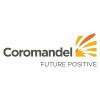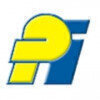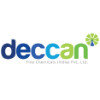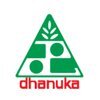Filter interviews by
Aarti Industries DCS Operator Interview Questions and Answers
12 Interview questions
TLV of chlorine is the maximum concentration of chlorine that a worker can be exposed to without experiencing adverse health effects.
TLV stands for Threshold Limit Value
TLV for chlorine is 1 ppm (parts per million)
TLV is set by the American Conference of Governmental Industrial Hygienists (ACGIH)
Exposure to chlorine above TLV can cause respiratory irritation, coughing, and chest tightness
DCS stands for Distributed Control System, a computerized control system used to control and monitor industrial processes.
DCS is used in industries such as oil refining, power generation, and manufacturing.
It allows for centralized control of multiple control loops and process units.
DCS typically consists of controllers distributed throughout the plant, connected by a communication network.
Examples of DCS vendors ...
DCS (Distributed Control System) is a system used to control and monitor industrial processes.
DCS uses multiple controllers distributed throughout a plant to control various processes
It allows for centralized monitoring and control of the entire system
DCS systems often use graphical interfaces for operators to interact with the system
DCS can be used in industries such as oil and gas, power generation, and manufact...
A Distributed Control System (DCS) is a computerized control system used to control and monitor industrial processes.
Consists of multiple control elements distributed throughout a system
Allows for centralized control and monitoring of processes
Used in industries such as oil and gas, power generation, and manufacturing
Examples include Honeywell Experion PKS, Emerson DeltaV, and Siemens PCS 7
A distillation column is a piece of equipment used in chemical processes to separate mixtures into their individual components.
Distillation columns use the principle of vapor-liquid equilibrium to separate components based on their boiling points.
They consist of a vertical column with multiple trays or packing material to facilitate the separation process.
The feed mixture is introduced at the bottom of the column,...
Open Loop is a control system where the output is not fed back to the input for correction or adjustment.
Open Loop control does not use feedback to make adjustments
It relies solely on the input and predefined control actions
Examples include automatic doors, traffic lights, and irrigation systems
Cascade loops are a series of control loops where the output of one loop is used as the setpoint for the next loop.
Cascade loops improve control performance by reducing the effect of disturbances.
They are commonly used in industrial processes where multiple variables need to be controlled.
An example is a cascade control system in a chemical plant where the flow rate of a reactant is controlled based on the level i...
Distillation is a process used to separate components of a liquid mixture based on their boiling points. Reflux is the return of condensed vapors back into the distillation system.
Distillation involves heating a liquid mixture to create vapor, then cooling the vapor to collect the separated components.
The components with lower boiling points vaporize first and are collected, while the components with higher boilin...
Control valves are used to regulate the flow of fluids in a process system by varying the size of the flow passage.
Globe valves: used for throttling and control of flow
Butterfly valves: used for on/off control of flow
Ball valves: used for quick shut-off
Diaphragm valves: used for precise control of flow
Types of reactors include batch reactors, continuous stirred tank reactors, plug flow reactors, and fluidized bed reactors.
Batch reactors operate in a closed system with a fixed amount of reactants.
Continuous stirred tank reactors have continuous flow of reactants and products.
Plug flow reactors have a continuous flow with no mixing of reactants along the length of the reactor.
Fluidized bed reactors use a fluid to...
Aarti Industries DCS Operator Interview Experiences
7 interviews found
(4 Questions)
- Q1. What is DCS ???
- Ans.
DCS stands for Distributed Control System, a computerized control system used to control and monitor industrial processes.
DCS is used in industries such as oil refining, power generation, and manufacturing.
It allows for centralized control of multiple control loops and process units.
DCS typically consists of controllers distributed throughout the plant, connected by a communication network.
Examples of DCS vendors inclu...
- Q2. How DCS work ??
- Ans.
DCS (Distributed Control System) is a system used to control and monitor industrial processes.
DCS uses multiple controllers distributed throughout a plant to control various processes
It allows for centralized monitoring and control of the entire system
DCS systems often use graphical interfaces for operators to interact with the system
DCS can be used in industries such as oil and gas, power generation, and manufacturing
- Q3. What is TLV of chlorine
- Ans.
TLV of chlorine is the maximum concentration of chlorine that a worker can be exposed to without experiencing adverse health effects.
TLV stands for Threshold Limit Value
TLV for chlorine is 1 ppm (parts per million)
TLV is set by the American Conference of Governmental Industrial Hygienists (ACGIH)
Exposure to chlorine above TLV can cause respiratory irritation, coughing, and chest tightness
- Q4. What is distillation ?? Tell about reflux also
- Ans.
Distillation is a process used to separate components of a liquid mixture based on their boiling points. Reflux is the return of condensed vapors back into the distillation system.
Distillation involves heating a liquid mixture to create vapor, then cooling the vapor to collect the separated components.
The components with lower boiling points vaporize first and are collected, while the components with higher boiling poi...
Interview Preparation Tips
I applied via Company Website and was interviewed in Jan 2024. There were 2 interview rounds.
(3 Questions)
- Q1. What is distillation column
- Ans.
A distillation column is a piece of equipment used in chemical processes to separate mixtures into their individual components.
Distillation columns use the principle of vapor-liquid equilibrium to separate components based on their boiling points.
They consist of a vertical column with multiple trays or packing material to facilitate the separation process.
The feed mixture is introduced at the bottom of the column, and ...
- Q2. What is open Loop
- Ans.
Open Loop is a control system where the output is not fed back to the input for correction or adjustment.
Open Loop control does not use feedback to make adjustments
It relies solely on the input and predefined control actions
Examples include automatic doors, traffic lights, and irrigation systems
- Q3. What is Reaction
- Ans.
Reaction is the response or behavior triggered by a stimulus or event.
Reaction is a response to a stimulus or event.
It can be physical, emotional, or cognitive.
Reactions can vary in intensity and duration.
Examples include flinching when touched by something hot, feeling happy after receiving good news, or thinking critically when faced with a problem.
(2 Questions)
- Q1. Open Loop and close loop
- Q2. Types of heat exchanger
- Ans.
Heat exchangers are devices used to transfer heat between two or more fluids.
Shell and tube heat exchanger
Plate heat exchanger
Double pipe heat exchanger
Finned tube heat exchanger
Regenerative heat exchanger
I applied via Naukri.com and was interviewed in Jan 2023. There were 2 interview rounds.

(3 Questions)
- Q1. DCS related question and technical
- Q2. DCS and technical related
- Q3. Plant related, Dcs related
Interview Preparation Tips
I applied via Walk-in and was interviewed in Jan 2023. There were 3 interview rounds.

(2 Questions)
- Q1. About Dcs and close loops , open loops , cascade loops
- Q2. What is cascade loops
- Ans.
Cascade loops are a series of control loops where the output of one loop is used as the setpoint for the next loop.
Cascade loops improve control performance by reducing the effect of disturbances.
They are commonly used in industrial processes where multiple variables need to be controlled.
An example is a cascade control system in a chemical plant where the flow rate of a reactant is controlled based on the level in a t...
(1 Question)
- Q1. Why did you want to leave current company
Skills evaluated in this interview
I applied via Company Website and was interviewed before Aug 2023. There was 1 interview round.
(5 Questions)
- Q1. Heat exchanger distillation pump
- Q2. Types of reactors
- Ans.
Types of reactors include batch reactors, continuous stirred tank reactors, plug flow reactors, and fluidized bed reactors.
Batch reactors operate in a closed system with a fixed amount of reactants.
Continuous stirred tank reactors have continuous flow of reactants and products.
Plug flow reactors have a continuous flow with no mixing of reactants along the length of the reactor.
Fluidized bed reactors use a fluid to susp...
- Q3. What is Distributed control system
- Ans.
A Distributed Control System (DCS) is a computerized control system used to control and monitor industrial processes.
Consists of multiple control elements distributed throughout a system
Allows for centralized control and monitoring of processes
Used in industries such as oil and gas, power generation, and manufacturing
Examples include Honeywell Experion PKS, Emerson DeltaV, and Siemens PCS 7
- Q4. Types of control valves
- Ans.
Control valves are used to regulate the flow of fluids in a process system by varying the size of the flow passage.
Globe valves: used for throttling and control of flow
Butterfly valves: used for on/off control of flow
Ball valves: used for quick shut-off
Diaphragm valves: used for precise control of flow
- Q5. Types of Alarms
- Ans.
Types of alarms in a DCS system include process alarms, equipment alarms, safety alarms, and communication alarms.
Process alarms indicate issues with the process being controlled by the DCS system
Equipment alarms alert to malfunctions or failures of equipment connected to the DCS system
Safety alarms warn of potentially dangerous situations that require immediate attention
Communication alarms signal problems with the co...
Interview Preparation Tips
I appeared for an interview before Jan 2024.
Effluent management & chemicals question
(1 Question)
- Q1. Document and family background
(1 Question)
- Q1. Salary discussions
I applied via Company Website and was interviewed in Feb 2022. There were 2 interview rounds.

(6 Questions)
- Q1. Tell me about yourself.
- Ans.
I am a highly skilled and experienced DCS Operator with a strong background in industrial automation.
I have been working in the field for over 10 years.
I am proficient in operating and troubleshooting various Distributed Control Systems (DCS).
I have a deep understanding of process control and instrumentation.
I am familiar with industry standards and safety protocols.
I have successfully implemented process improvements ...
- Q2. I ma Manjit Singh Parihar
- Q3. Where are you your company
- Q4. I am currently working
- Q5. Vapi Gujarat di methyl sulfate handling
- Q6. Iam currently working dms plant
Interview Preparation Tips
Top trending discussions






Interview questions from similar companies


Basic questions of field
(1 Question)
- Q1. Introduced my self, plant related questions, safety related questions
(1 Question)
- Q1. Salary related discussion
Interview Preparation Tips
always prepare your resume

I applied via Recruitment Consultant and was interviewed before Nov 2018. There was 1 interview round.
Interview Questionnaire
1 Question
- Q1. I have a select to plant operator finally done sir??
Interview Preparation Tips


(1 Question)
- Q1. What is insecticide ?
- Ans.
Insecticide is a chemical substance used to kill insects and control their populations.
Insecticides are commonly used in agriculture to protect crops from pests.
They can come in various forms such as sprays, powders, and baits.
Some examples of insecticides include pyrethroids, neonicotinoids, and organophosphates.
Aarti Industries Interview FAQs
Tell us how to improve this page.
Aarti Industries Interviews By Designations
- Aarti Industries Assistant Manager Interview Questions
- Aarti Industries Office Trainee Interview Questions
- Aarti Industries Deputy Manager Interview Questions
- Aarti Industries DCS Operator Interview Questions
- Aarti Industries Executive Production Interview Questions
- Aarti Industries Executive Interview Questions
- Aarti Industries Graduate Engineer Trainee (Get) Interview Questions
- Aarti Industries Operations Executive Interview Questions
- Show more
Interview Questions for Popular Designations
Overall Interview Experience Rating
based on 8 interview experiences
Difficulty level
Duration
Interview Questions from Similar Companies
Aarti Industries DCS Operator Reviews and Ratings
based on 14 reviews
Rating in categories
|
Assistant Manager
659
salaries
| ₹4.5 L/yr - ₹12.5 L/yr |
|
Deputy Manager
591
salaries
| ₹8.2 L/yr - ₹14 L/yr |
|
Executive
522
salaries
| ₹2.5 L/yr - ₹7.7 L/yr |
|
Plant Operator
346
salaries
| ₹1.6 L/yr - ₹5.2 L/yr |
|
Senior Executive
341
salaries
| ₹4.1 L/yr - ₹9 L/yr |

UPL

Coromandel International

PI Industries

Rallis India
- Home >
- Interviews >
- Aarti Industries Interview Questions















